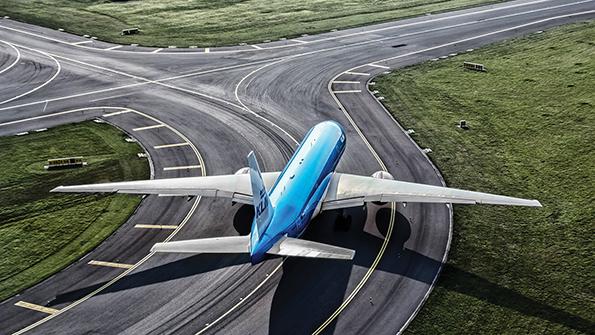Transatlantic Airline Traffic Recovery Prospects Looking Bleaker

Airlines waiting for a full reopening of the transatlantic sector in the summer and then in September were dealt a blow Aug. 30 when the European Council recommended instead a further tightening of COVID-19 restrictions on U.S. travelers to Europe, removing the nation and a handful of others from its “white list” of safe countries.
The council’s recommendation is just that—a recommendation. But even if member states can choose not to follow it, and even if the changes may not actually hinder travel plans for many—with an ever-growing majority of the U.S. population now vaccinated—the signal it sends is a gloomy one for airlines.
The council recommended that Israel, Kosovo, Lebanon, Montenegro and North Macedonia also be removed from the European Union’s safe list, which allows travelers to enter and not have to quarantine if they present a negative COVID-19 test result or proof of vaccination, whether or not their trip is considered essential.
Under the new guidelines, only travelers from the newly restricted countries who are fully vaccinated or whose trip is considered essential should still be allowed to travel to the European Union.
But the gloomy signal has already translated into schedule changes as some European countries—including Bulgaria, Denmark, Italy, the Netherlands and Sweden—have responded to the recommendation with their own updates to travel rules. The Dutch government has designated the U.S. a very high-risk area, meaning a 10-day quarantine is required even for vaccinated travelers
KLM said it would remove from its winter schedule proposed new flights from Amsterdam to Miami and Orlando, Florida, and Las Vegas until further notice. Describing the decision as “a big step backward for KLM,” the airline added: “Health and fighting COVID-19 are paramount, but the measures taken must be effective and proportionate. It looks like other EU member states, such as Italy, France and Belgium, are not putting a triple lock on the door for travelers from the U.S.”
Air France is waiting to see if Paris will impose tighter restrictions on U.S. travelers, too. Having observed positive trends over the summer in the North Atlantic segment, thanks to what an Air France spokesman calls the “dynamism of demand from the U.S. to Europe,” the airline’s winter schedule includes 11 U.S. destinations. The schedule likely will evolve depending on the travel-restrictions situation.
Germany designated the U.S. a high-risk area in August, which was bad news for Lufthansa Group. Not long before the change in designation, CEO Carsten Spohr said North America was the group’s most profitable market, helped by cargo. In early August, Swiss, also part of the group, said a reopening of the U.S. was “the key to any further substantial recovery.”
Even if many member states are not yet following the EU recommendations, the muddle highlights the lack of coordination about which airlines have been complaining since early in the pandemic.
The airline industry welcomed the rollout of the EU COVID Digital Certificate (DCC), aimed at easing travel in the region over the summer. But the International Air Transport Association (IATA) warned Sept. 2 that free movement within Europe is still being compromised by the failure of EU member states to harmonize COVID-19 entry regulations. “As a result, the reopening of borders is confusing travelers and businesses and not delivering the expected benefits in terms of easier travel and economic recovery,” IATA said, noting that about 30% of states using the DCC are not accepting rapid-test results, and 41% are not allowing vaccinated travelers from non-EU white-list countries to enter.
“The good work done by the commission and the states to develop the DCC is being wasted by a mess of unharmonized regulations,” said Rafael Schvartzman, IATA’s regional vice president for Europe.
The status of transatlantic travel was already a hot topic for Europe’s airlines just before the summer season. They hoped the normally lucrative segment, if free from restrictions, could help their flagging long-haul activities close the gap with short-haul traffic—which has now recovered to around 72% of 2019 levels, according to Eurocontrol. However, while restrictions eased for U.S. residents traveling to the EU in June, the U.S. kept in place restrictions on foreign nationals traveling to the states.
The U.S. is on the UK’s “amber list,” which means fully vaccinated travelers still must take a COVID-19 test after arrival, and unvaccinated travelers must quarantine. British Airways reported a 95% surge in bookings within hours of the addition of the U.S. to the amber list at the end of July. It said at the time that it was adding thousands of seats on key U.S. routes starting in the second half of August and would continue to broaden its U.S. schedule through September.
Before the pandemic, the region’s legacy carriers relied heavily on the transatlantic segment. They had reported a boost in booking activity on those routes since June, when restrictions on travel from the U.S. to Europe were eased—-raising hopes that with further easing, that positive momentum could continue.
OAG data shows that the number of one-way seats from the U.S. to Western Europe increased to 1.3 million in June, 1.6 million in July and 1.8 million in August, from 1 million in May, as U.S. travelers took advantage of eased entry requirements. That trend is now likely to reverse if more countries fall in line with the European Council’s recommendation.




